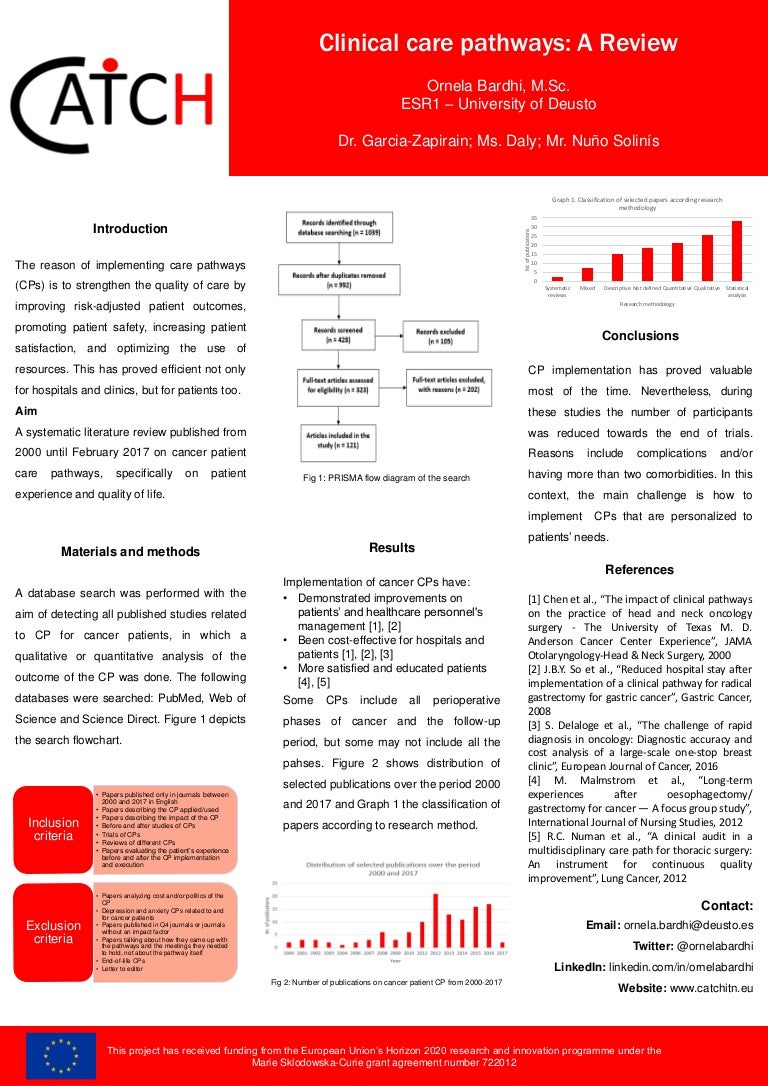Table of Content
Although this is an important issue and should guide future efforts, it is not unique to the UK (Greenhalgh et al., 2004; Evans-Lacko et al., 2010). The Belgian Dutch Clinical Pathway Network was launched in March 2000 by a multidisciplinary team under the leadership of the Centre for Health Services and Nursing Research, School of Public Health, at the Catholic University of Leuven, Belgium . The network aims to support Belgian and Dutch hospital organizations in the development, implementation and evaluation of CPWs.
Third, despite genomic and epigenomic studies identifying various cancer types/subtypes, it is important to understand the biological significance of these molecular/epigenomic changes. In vivo genetically engineered mouse models need to be generated for further extensive cellular, molecular, and histological phenotyping. To accurately describe the subtypes, it needs molecular and clinical evidence in combination. When tumors are accurately classified into their subtypes, the next step will be to improve our understanding of their vulnerabilities for the generation of new drugs . The development of such new treatments will benefit from recent advances in high-throughput profiling that allows researchers to investigate changes in the genomic and epigenomic makeup of cancers, which aids the genotype-based classification into subtypes.
A Clinical Pathway for Congestive Heart Failure : Home Healthcare Now
Top-down strategies that do not actively involve the relevant professionals have little or no impact. It is also pivotal to carefully select the group of patients targeted by the CPW. Compliance with evidence-based recommendations should always be measured prior to CPW development and implementation in order to demonstrate the presence of, and extent of, impact on clinical practice.

The purpose of the programme was to realize a significant improvement in patient safety and patient flow in 20% of Dutch hospitals within four years. One of the specific aims of the programme was to shorten the total duration of the diagnostic process and treatment by between 40% and 90%. During the first year of the programme the participating hospitals achieved a reduction of 32% (Consortium-Sneller-Beter-Pijler 3, 2006). Kinsman L, James E, Ham J. An interdisciplinary, evidence-based process of clinical pathway implementation increases pathway usage.
American Journal of Respiratory and Critical Care Medicine
Each student will be assigned a capstone mentor and will receive a capstone report. The report will build throughout the program, with portions of the report being submitted at key milestones. Students will receive feedback from their personal mentor, peers and lecturers. Learn about the curriculum, learning format, and the benefits of the program with Directors Dr. Kevin Tucker and Mara Bloom. Finally, students complete a capstone project – an intensive, hands-on experience at their home institution. In addition, Freeman clinicians are “speaking the same language” since using MedBridge, and management has noticed that there is more continuity of care.

These exercises include analyzing case studies, applying new skills and LEAN thinking concepts in areas such as performance improvement and modeling business and strategic plans. At simulation facilities across the Harvard affiliates, students will have the opportunity to practice skills application and scenario planning. Whether your team is just starting to learn about oncology clinical pathways, or they are in need of deeper, customer-level insight, Clinical Pathways University has a curriculum designed to equip all levels of learners with the skills needed for success. Our mission is to improve the lives of patients and providers by creating the most impactful educational content on an innovative learning platform.
Your Pathway to Understanding a Key Component to Success in a Value-Based Care Environment
Examples are the United Kingdom, Canada and Australia (EPA, 2018b; Huckson & Davies, 2007; Grimshaw et al., 2007). CPWs may serve as useful and evidence-based management tools to reduce variations in clinical practice and to decrease costs and length of stay. The reported effects on in-hospital complications are promising and the pathway concept seems to be effective for large groups of patients, especially those receiving invasive procedures. Thus CPW implementation is likely to become increasingly emphasized in Europe (Evans-Lacko et al., 2010) although much more experience with CPW implementation is needed to fully understand this quality improvement concept.
Prevalence and use of clinical pathways in 23 countries – an international survey by the European Pathway Association. A prospective, randomized, controlled trial of an emergency department-based atrial fibrillation treatment strategy with low-molecular-weight heparin . Effectiveness of a clinical pathway for inpatient asthma management.
UPS Healthcare Expands Global Cold Chain Logistics Network
Administrators and directors of home health agencies are increasingly accountable for the productive use of resources and quality patient outcomes. However, few reliable ways exist to measure and influence these components. The author proposes the use of the critical pathway typically used in acute care case management as an efficient tool to guide home health nursing practice. The author presents the process for developing a critical pathway for congestive heart failure patients in a home health agency, as well as results of a study determining when nursing interventions were implemented.

Along with classroom work, team assignments and leadership exercises, the program features a capstone project—a mentored clinical operations project. In this fast-paced clinical setting, students will apply their newly acquired skills and practical knowledge as they implement, interpret refine and present their projects throughout the academic year. Another rationale (for policy-makers and healthcare institutions) for implementing and using CPWs is that they have also been proposed as a strategy to optimize resource allocation and cost-effectiveness.
It is also striking that similar interventions such as DMPs often include CPWs, and that their successful implementation strategies also refer to an implementation team, audit and feedback, patient involvement and education sessions. This supports evidence reported for the successful implementation of research into practice via other strategies such as clinical guidelines (Grimshaw & Thomson, 1998; Bero et al., 1998). Develop effective clinical pathways that help your organization improve quality of care, reduce costs, and boost patient outcomes. DGKPM members have published theoretical papers on CPWs but also assessed quality effects of pathway projects. For example, a classification for development levels of CPWs has been proposed (Uerlich et al., 2009). Moreover, a systematic review on the utilization of CPWs in surgery (Ronellenfitsch et al. 2008) and a qualitative study on success factors for development and implementation of CPWs (De Allegri et al., 2011) have been conducted.

We would often keep them the whole cert period, front load visits and then fall into a skip pattern. Then on the "off weeks" there were disease management nurses in the office that made calls during those weeks with a check sheet of questions to ask the patient. It worked very well for most patients, problems arose with me when the patient didn't quite fit into the "box" and I would increase visits based on my assessment.
Hospital cost data were reported as direct hospital costs and as total costs including administration or other overhead costs. Due to the low number of high-quality studies evaluating hospital costs, the study investigated all objective cost data available, such as hospital charges (i.e. DRGs) or country-specific insurance points (Rotter et al., 2010). This highly variable set of reported cost measures precluded further economic evaluation and we concentrated therefore on the direct cost-effects of CPWs rather than their cost-effectiveness.
Part II of a study that compared two groups of elderly home health patients with congestive heart failure is presented. One group’s plan of care was guided by a clinical pathway while the other group’s was not. As described in the first part of the study , the rehospitalization rate in the group not on the clinical pathway was 22.9% versus 12.5% in the clinical pathway group, a 45% reduction. In this article the pathway is presented, intermediate patient outcomes are described, and selected variables are analyzed for their impact on rehospitalization.
Specialized Pathways
Due to the high level of clinical and statistical heterogeneity , length of stay and hospital cost data were not suitable for pooling among those studies. An example of a CPW for the management of elderly inpatients with malnutrition is provided in Fig. It aims to standardize care for a specific clinical problem, procedure or episode of healthcare in a specific population. It details the steps in a course of treatment or care in a plan, pathway, algorithm, guideline, protocol or other “inventory of actions” (i.e. the intervention has time-frames or criteria-based progression). The EPA definition lacks specificity, i.e. it does not allow CPWs to be distinguished from similar concepts or strategies. Such a distinction is necessary when addressing the issue of effectiveness of the strategy.


No comments:
Post a Comment